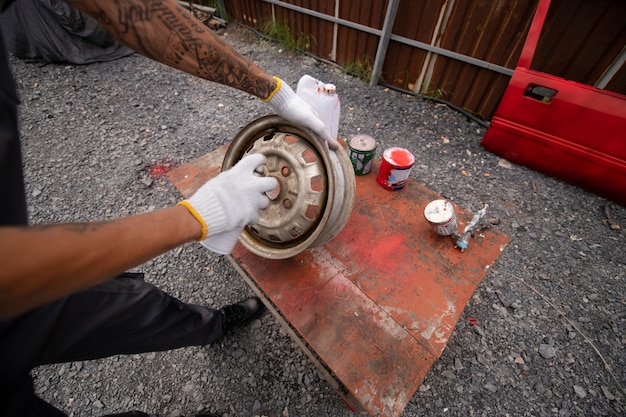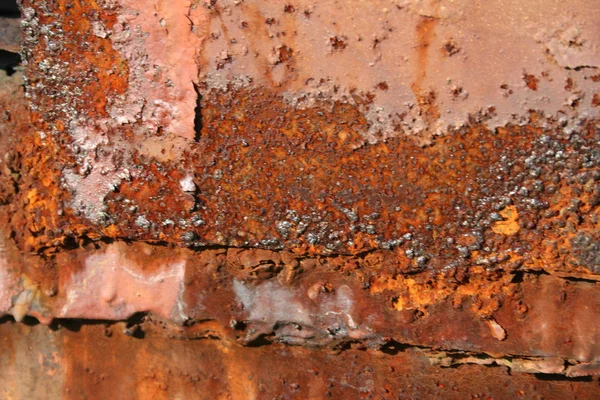Unlock The Secret Power Of Rust Inhibitors: Preserving Your Investments For Generations
In a world where metals are the backbone of our technological and infrastructural advancements, the relentless threat of rust looms large, silently jeopardizing the longevity of our investments. The insidious corrosion process, driven by the unholy alliance of oxygen and moisture, can transform prized possessions, from automobiles to critical infrastructure, into mere relics of their former selves. However, a powerful ally emerges amidst this ongoing battle – rust inhibitors. This article delves into the secrets behind these chemical guardians, exploring their transformative ability to not only halt corrosion but also preserve our investments for generations to come.
As we navigate an era of constant innovation and economic growth, the significance of rust inhibitors transcends mere protection; it becomes a legacy-building endeavor. Whether safeguarding the structural integrity of a towering skyscraper, enhancing the longevity of a cherished vintage car, or ensuring the seamless operation of industrial machinery, rust inhibitors serve as the unsung heroes in our pursuit of sustainable progress. Join us on a journey to unlock the concealed power of rust inhibitors, understanding how these chemical guardians stand as a testament to responsible asset management and the preservation of our invaluable investments across diverse industries.
Understanding the Menace: The Destructive Force of Rust
Rust, scientifically known as iron oxide, is the result of the corrosion process that occurs when iron or steel comes into contact with oxygen and moisture. The consequences of rust are not merely cosmetic; it weakens the structural integrity of metals, leading to compromised safety and functionality. In industries such as automotive, construction, and manufacturing, the impact of rust can be financially and operationally devastating.

The Silent Invader: How Rust Sneaks In
Rust doesn't announce its arrival; it silently infiltrates metals, spreading its destructive influence. The process of corrosion begins with the formation of rust particles on the metal surface, eventually penetrating deeper layers. Factors like humidity, exposure to salt, and environmental pollutants accelerate this corrosive process. Understanding the stealthy nature of rust is the first step in devising an effective defense strategy.
Rust Inhibitors: Unveiling the Protective Arsenal
Rust inhibitors, also known as corrosion inhibitors, are chemical compounds designed to impede or prevent the corrosion of metals. These inhibitors work by forming a protective layer on the metal surface, acting as a barrier against moisture and oxygen - the two primary catalysts for rust formation. The secret lies in the formulation of these inhibitors, which can vary based on the type of metal and the environmental conditions they are likely to encounter.
Types of Rust Inhibitors in 5 or 6 lines points
- Passive Inhibitors: Form protective layers on metal surfaces, hindering contact with corrosive elements. Common examples include coatings and paints.
- Active Inhibitors: Disrupt the electrochemical corrosion process by interacting with metal ions, forming stable, non-corrosive compounds.
- Volatile Corrosion Inhibitors (VCIs): Emit protective vapors that create a thin film on metal surfaces, especially useful in enclosed spaces or hard-to-reach areas.
- Anodic Inhibitors: Enhance corrosion resistance by promoting the formation of a passive oxide layer on the metal surface.
- Cathodic Inhibitors: Work by capturing and neutralizing corrosive ions, preventing their interaction with the metal substrate.
- Mixed Inhibitors: Combine characteristics of both anodic and cathodic inhibitors for comprehensive corrosion protection.
Applications Across Industries
The power of rust inhibitors extends across various industries, safeguarding a multitude of investments.
Automotive Industry
In the automotive world, where metal components are exposed to harsh weather conditions and road salts, rust inhibitors play a crucial role. From the chassis to critical engine components, the application of rust inhibitors ensures longevity and operational efficiency.

Construction and Infrastructure
In the construction and infrastructure sectors, where steel structures bear the brunt of environmental elements, rust inhibitors act as guardians. Bridges, buildings, and pipelines fortified with rust inhibitors stand resilient against the test of time.
Manufacturing
In manufacturing, where precision and reliability are paramount, rust inhibitors contribute to the integrity of machinery and equipment. From tools to intricate components, the application of these inhibitors extends the lifespan of critical assets.
Best Practices: Unlocking Maximum Potential
To unlock the secret power of rust inhibitors, it's essential to adopt best practices in their application and maintenance.
Regular Inspections
Regular inspections are vital for preventing rust. By routinely checking metal surfaces, early signs of corrosion can be identified and addressed promptly with rust inhibitors. This proactive approach extends the lifespan of assets, minimizing the risk of expensive repairs and ensuring long-term durability.
Proper Surface Preparation
Proper surface preparation is essential for effective rust prevention. Removing existing rust, thoroughly cleaning the surface, and ensuring it is free from contaminants to enhance the performance of rust inhibitors. This meticulous preparation ensures a strong bond between the inhibitor and the metal, maximizing its protective capabilities and extending the longevity of the treated surface.
Choosing the Right Inhibitor
Proper surface preparation is essential for effective rust prevention. Removing existing rust, thoroughly cleaning the surface, and ensuring it is free from contaminants to enhance the performance of rust inhibitors. This meticulous preparation ensures a strong bond between the inhibitor and the metal, maximizing its protective capabilities and extending the longevity of the treated surface.
The Environmental Impact
While rust inhibitors contribute significantly to preserving investments, the environmental impact of these chemicals is a topic of concern. It is crucial to strike a balance between effective corrosion protection and environmental responsibility. Researchers and manufacturers are continuously working towards developing eco-friendly rust inhibitors to address this concern.

